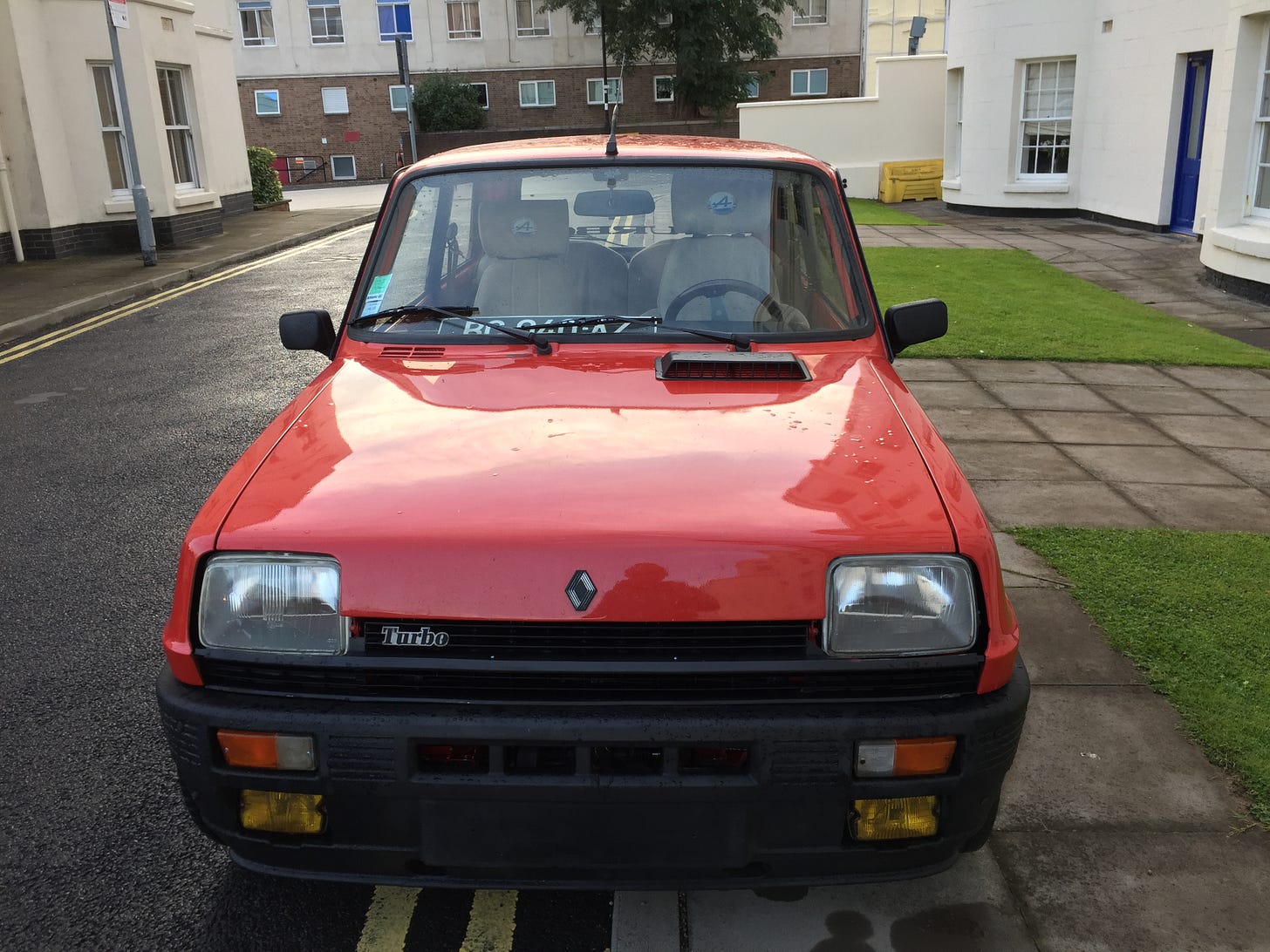PTSQ Series - 1: An ode to Engine Orders
A cylinder Philharmonic
Right after you’ve comfortably sat yourself in your brand new car you start your engine. Depending on what the manufacturer had in mind when designing the car, what you will experience next in term of Powertrain Sound Quality (PTSQ) will basically fall in one of these 3 categories:
It is what it is: Yup, we fitted an engine in the car, it has the noises/vibrations issues it has but hey you most probably didn’t buy this car for the PTSQ so deal with it.
It usually is a cheap car with a low priority affixed to PTSQ, not really what we’ll be talking about here in general, albeit it is a very rational choice to make for OEMs depending on the target market and customer. In some cases, it might just be that the engine sounds soooo good right from the start that little work is needed but it is really just about money.
Nothing to report here: Most of the effort/money/time is spent on making the powertrain noise as error-free as is decided by the program, i.e. no boominess (low frequency noise) at idle/fast idle or at full throttle at any RPM, no objectionable vibrations in the steering wheel/floor/seat, etc...
This is how most OEMs design their cars, mostly because nowadays there is lower masking noise from the wind or the road, the customers have become accustomed to error-free cars, and also to be able to differentiate between their model variants (they leave the best PTSQ for their expensive variants)
VROOM VROOM: Everything you hear coming from the powertrain has been extensively worked on: flare-up speed and max RPM, idle/fast-idle and off/part/full-throttle characters, i.e. loudness and linearity of the overall level and the engine orders over the whole RPM range and pops and bangs. The limiting factors in that case can be related to money but also to the compromises that have to be made with other significant attributes, such as dynamics, weight, consumption, depollution as well as regulation such as Pass-by-noise putting a cap on how loud your exhaust noise can be.
We will be exploring the last two categories over the next posts, but today we’ll start with some VROOM VROOM material, i.e. why the number of cylinders lead to different types of PTSQ. There are many factors contributing to PTSQ, most notably everything that relates to intake and exhaust components, valve timing, crankshaft balancing, mount isolation, insertion loss but we’ll talk about these in a separate post.
We’ll answer this question with an objective answer, i.e. the physical quantities associated to NVH, but also with a subjective answer, focused about the human brain’s interpretation of the physical quantities, i.e. psychoacoustics. Let’s go !
We first need to introduce the notion of order, not to be confused with engine firing order, as it is an essential tool in studying rotating components and is used across a wide range of industries.
Let’s suppose you have a (poorly drawn) wheel with a wooden plank attached to it, rolling on the floor:
Each time the wheel performs one revolution (one complete rotation) the plank will impact the floor once. This is what we would call the wheel first order. So if the wheel is rolling at 1 rotation per second, you would get one impact (event) per second, so far so good.
If we add a second plank to the (still poorly drawn but now with colors) wheel and let it roll on the floor:
Now, each time the wheel performs a revolution, you will get two impacts (two events). This is what we call, you guessed it, the wheel second order.
This notion of order matters when studying PTSQ because:
In a 4-stroke combustion engine (which will be the main focus in this series), you’ll have a varying number of cylinders firing per revolution depending on the number of cylinders:
For a 4-cylinder engine, you have 2 cylinders firing per revolution (2 events).
For a 6-cylinder engine, you have 3 cylinders firing per revolution (3 events).
For a 12-cylinder engine, you have 6 cylinders firing per revolution (6 events).
When designing any system from an acoustical point of view, amplitude and frequency distributions are the main considerations and orders directly relate to frequency in a rotating machinery.
As a quick note:
Amplitude relates to the loudness of a noise or the strength of a vibration.
Frequency relates to the pitch of a noise, the higher the frequency the higher the pitch; similarly, for vibrations the frequency relates to what we could call the speed of vibrations (we really mean the frequency though).
Back to our combustion engines. For a variety of reasons that we’ll explore later, engines will produce a large amount of noise and vibration orders, but they are usually defined by what we call the main engine order, which is directly related to the number of cylinders firing per revolution.
Based on what we’ve just seen, can you guess what are the main engine orders of a 4/6/8/12-cylinder engine ?
If you said 2/3/4/6 respectively you can continue reading ! If not, let’s continue anyway but you can blame me in the comments for my poor explanation skills.
As I mentioned, in a rotating machinery orders relate to frequency for a simple reason: If you know what is the rotational speed of your engine, you know how many events happen every minute, which is almost the definition of frequency.
Effectively, frequency is expressed in Hertz (Hz), with 1Hz standing for one event per second, 100Hz for 100 events per second etc.
If we consider a 4-cylinder engine and look at the 2nd order, for every revolution there are 2 events. Hence, if the engine is happily idling at 600rpm (600 Revolutions Per Minute), knowing there are 60 seconds in a minute (shocking, I know), it translates to 10 revolutions per second, meaning 20 events per second, which is 20Hz.
There you go ! If you’re sat in a 4-cylinder engine car idling at 600rpm (which is quite low, usually it is between 600-800rpm for a hot idle on modern cars, but hey it gives a round number) the main frequency you’ll be listening to is 20Hz, which is not only the lowest frequency the human is capable of perceiving but also extremely unpleasant (associated to boominess) if excessively loud.
This doesn’t mean it will be the ONLY noise you’ll hear in the car as you never hear only one frequency at a given moment (one frequency might absolutely dominate the noise you hear but your brain still processes all the other ones it hears), but it will surely be the main source of excitation for vibrations for example.
The formula to calculate the frequency of any order # (replace the “#” with the number you want) given a specific RPM is as follows:
Frequency (Hz) = (Order #)x(RPM/60)
What would be the main frequency of a 6/8/12-cylinder engine idling at 600rpm ?
That’s right, it would be 30/40/60Hz, bravo !
Ok, so now we know about orders, main engine orders and how they relate to frequency, so what ?
Well for a start, it tells us that:
For a 4-cylinder engine whose RPM goes from 600rpm to 6500rpm, the main frequency will vary between 20Hz and 216Hz.
For a 8-cylinder engine whose RPM goes from 600rpm to 6500rpm, the main frequency will vary between 40Hz and 432Hz.
For a 12 cylinder engine whose RPM goes from 600rpm to 6500rpm, the main frequency will vary between 60Hz and 650Hz.
That is where we leave the physics on the side for a short moment and focus on the subjective aspect of noise, the psycho-acoustics:
Firstly, having a wider frequency range means you have more “musical ground” your engine can cover, which translate to a less monotonous engine note and an increased differentiation between the low and high rpms. Furthermore, the higher the cylinder count, the higher the number of harmonics the main engine order there will be. An analogy would be the difference between having two violinists and two flutists playing music together versus a fully fledged symphonic orchestra of 60 musicians.
Secondly, we naturally associate the frequency of a noise we hear to the speed of a related object, i.e. at equal vehicle speed, a V12 Engine rotating at 6000rpm will sound faster than a 4-cylinder engine rotating at 6000rpm, if only because the main frequency associated will be higher.
Lastly, the rate at which the main frequency increases is different between a 4-cylinder engine and a 12-cylinder engine. Effectively, if it takes 1 second for a 4-cylinder engine to go from 600rpm to 6500rpm, it means (6500-600)/1 = 5900rpm/s which equals to a rate of (2*5900/60) = 197Hz/s. For a 12-cylinder engine, it also means 5900rpm/s but its main frequency will increase at a rate of (6*5900/60) = 590Hz/s, 3 times as fast . Just as the frequency itself, the frequency increase rate is associated with feelings of speed.
So, at equal performances, higher cylinder counts usually means increased feelings of sportiness and speed.
Of course, another aspect to take into consideration is the performance part itself: having a 5.7L V8 engine offering the same acceleration of a 2.0L I4 engine can be interpreted as being slow, and just looking at that MINI Clubman JCW overtaking you in your Dodge Challenger might achieve to convince you of just that ¯\_(ツ)_/¯.
We’ll stop here for today but before we do that, let’s look at and listen to a few examples.
Here is a video of a great sounding and extremely cute 1.4L 4-cylinder car (one might say the best sounding 4-cylinder car ever built, no bias here): My Renault 5 Alpine Turbo from 1983:
As I don’t have a good recording of it just yet, let’s listen to this roaring beast on a track, especially the 1:45s to 1:55s time stamp:
Now let’s look at the corresponding spectrogram, i.e. the noise colormap of the 10seconds of wide-open throttle acceleration that you just watched:
What you can see here are all the noises you can hear in the cabin during this acceleration. The brighter the color (from dark blue to bright yellow), the louder the corresponding frequency. On the horizontal axis is the time, while on the vertical axis is the frequency. As you can see, the two brightest lines correspond to the 2nd and 4th orders. How can we know that easily ? Well, we know that the 2nd order ranges from ~20Hz to ~220Hz for an engine going from ~600rpm to ~6500rpm, this is a 4-cylinder engine and it sounds like he’s revving close to the limit in the video. That’s enough clues for us to identify at least one order and from this one you can then tell each one apart, as all the other lines that we see are orders that you can hear too.
Now for another favorite of mine, but with a (slightly) bigger engine: the Jaguar F-Type SVR 5.0L V8 :
Here is the corresponding spectrogram for the 0:20 to 0:45 time stamps:
Unlike the Renault 5 shown earlier, you can see that the F-Type SVR has many more orders that appear very bright hence loud and many of these are pretty high orders too. You might have noticed that certain frequency bands appear brighter than others, these are what we call resonances and are a central element to achieve different sound characters, necessitating the tuning of numerous elements from the intake to the exhaust system. This is the result of many iterations of PTSQ design loops to achieve the desired result, a brilliantly sounding car (I am not being very objective here am I?).
One last example, as we mentioned V12 a few times, we might as well see what it looks (and sounds) like.
Here is a Ferrari 812 GTS N-Largo 6.5L V12 sounding brutally ferocious:
And the associated spectrogram for this segment from 2:45 to 3:25:
Similarly to the F-Type, the Ferrari has many high orders that light up brightly, it has a few resonances and it goes very high in frequency.
We could look at a “regular” Ferrari 812 and compare the spectrograms to try and understand what changes have been made to the exhaust line but that will be for another time probably.
We still have a lot to talk about in terms of PTSQ, but I feel like this was a good enough introduction where we covered several basic aspects of NVH that will come handy for the next posts.
Thanks for reading until here, don’t hesitate to post suggestions or ask questions in the comments!
Part 2 is here:








